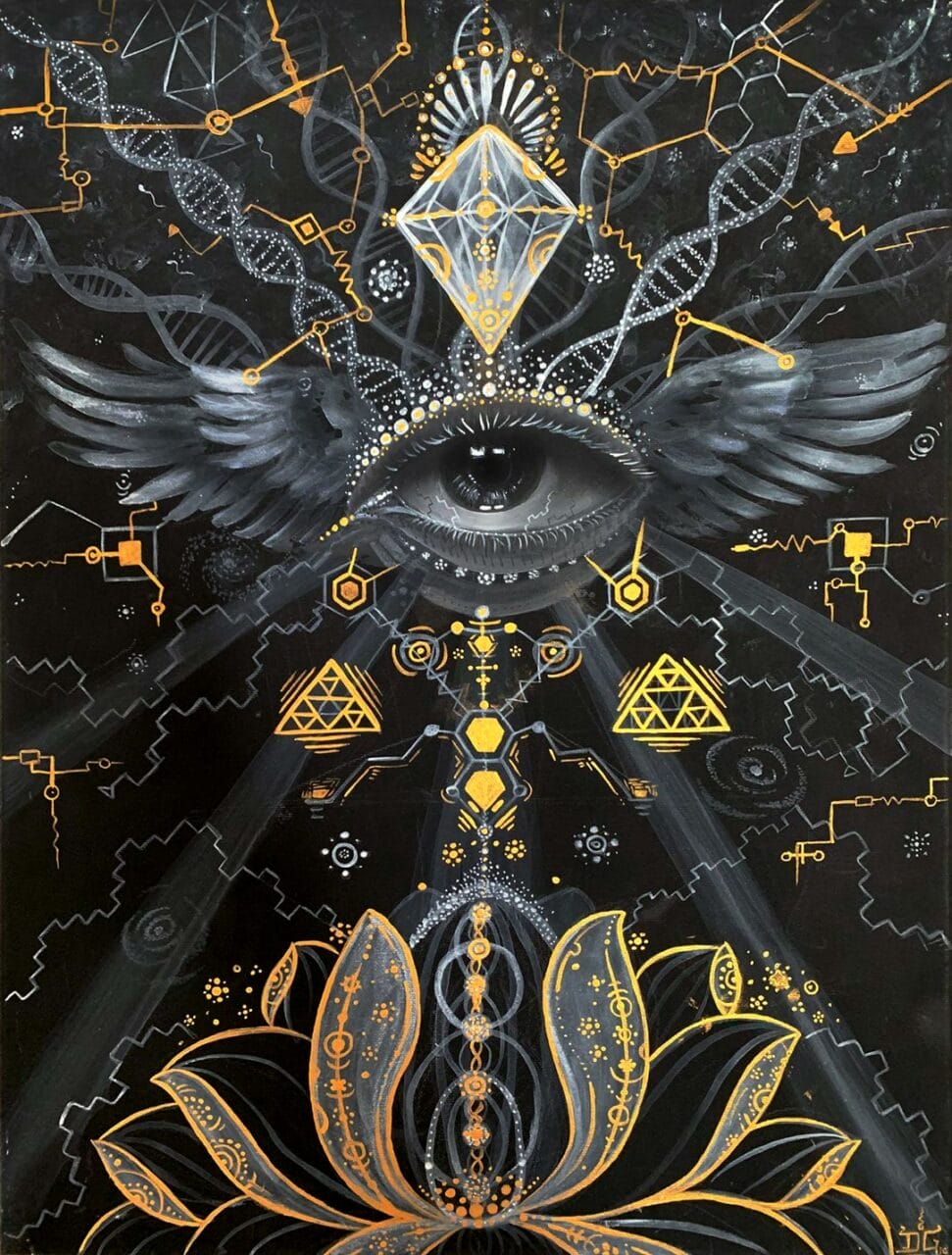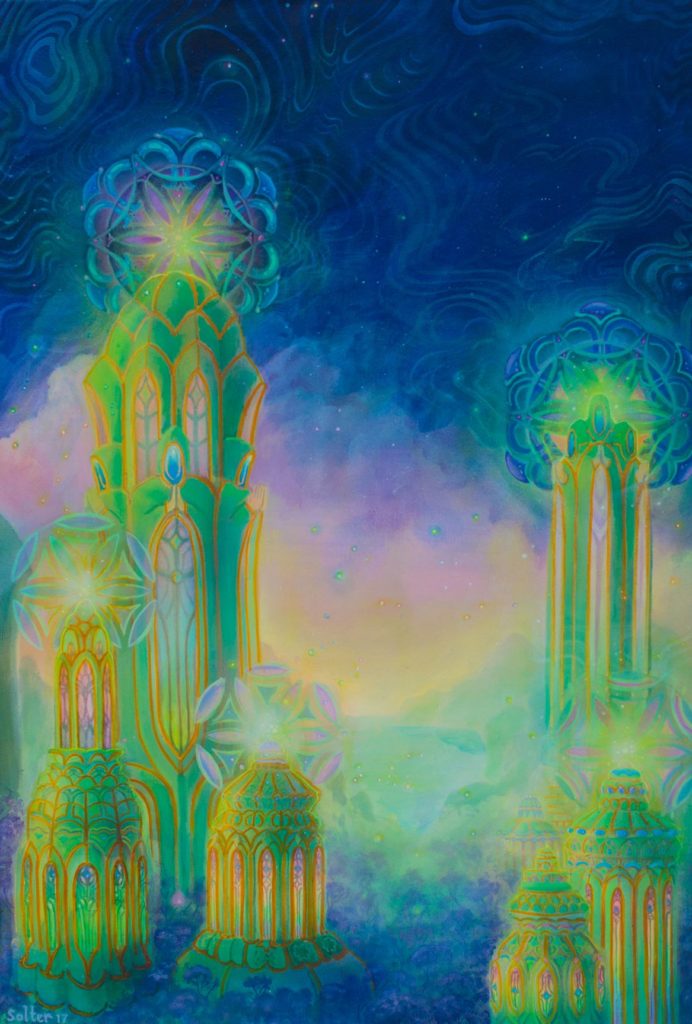
© Uni Kaya
A Look Back in Time: The Story of Psilocybin Mushrooms
Tracing back to 9000 BC, the presence of Psilocybin Mushrooms is well-documented in historical records. With a repertoire of over 200 unique species, these mushrooms are known for their psilocybin content, which is responsible for inducing hallucinogenic effects. These effects can range from altered perception and sensory hallucinations to profound spiritual experiences. For thousands of years, these mushrooms have served as key elements in spiritual ceremonies, rituals, and practices across various cultures and tribes. A large number of these historical accounts originate from North and South America.
The Role of Psilocybin Mushrooms in Antiquity
Over the centuries, many cultures have made use of natural psychedelics. Evidence from the Sahara Desert suggests that humans were consuming Psilocybe Cubensis, a type of magic mushroom, over 7000 years ago. Archaeological findings show representations of this psychotropic substance in ancient art across various regions. For instance, indigenous tribes of the Sahara in North Africa depicted its use in paintings dating back to around 9000 BC. Likewise, the renowned Selva Pascuala mural rock painting in Spain, estimated to be 6000 years old, suggests the use of Psilocybe Hispanica in religious ceremonies. The influence of these substances on our cultural evolution, religion, art, societal norms, and everyday life has become increasingly apparent. They have undoubtedly left a significant mark on our culture and society.
A Brief Overview of the Historical Use of Psilocybin Mushrooms
Throughout history,magic Psilocybin Mushrooms have been in use for a considerable length of time. The psychoactive substance that we recognize today has a history spanning several centuries, with a diverse range of usage practices. It’s time for Magic Mushrooms Quebec Canada to delve into the historical progression that has led Psilocybin Mushrooms to its current status.
Key Points to Note
- Dried Psilocybin Mushrooms have been a part of traditional rituals and spiritual healing practices for a long time. Currently, they are used as treatment for mental health conditions.
- Psilocybin Mushrooms became a staple of the hippie culture and played a significant role in the psychedelic revolution, encouraging its recreational use.
- Key figures such as Wasson, Sabina, and McKenna were instrumental in introducing psilocybin to the contemporary world.

© Jonathan Solter
Backing the Stoned Ape Theory
Terence McKenna pioneered the Stoned Ape Hypothesis, proposing that psilocybin might have influenced human evolution, especially cognitive development. Despite some opposition, the intriguing nature of the theory remains undeniable.
Ancient Societies and Ceremonial Rites
Historical societies symbolized cubes through art, statues, and symbols, indicating the ceremonial use of Psilocybin Mushrooms. The Mayans and Aztecs used it to connect with supernatural beings, including gods. Within the multiculturally rich Aztec society, it was referred to as “teonanácatl“, which means “flesh of the gods”. The concept of a psychedelic experience was alien, leading them to view it as a divine entity. Moving north to Siberia, hallucinogenic Psilocybin Mushrooms were harnessed by Siberian shamans. They specifically used the hallucinogenic substance (Psilocybin Mushrooms) known as “Amanita Muscaria” for spiritual healing and customary practices, despite its toxic nature. This usage dates back nearly ten thousand years. In African tribal rituals, especially among the Congo and Zimbabwean tribes, cubes were employed for communication with ancestors, to induce visions, and promote spiritual healing. These historical societies contribute to the understanding of contemporary psilocybin use. The reverence for this substance in these cultures originated from its divine connections and its ability to provoke mystical experiences.
Psilocybin Mushrooms in Myth and Folklore
Numerous accounts, including those by Gordon Wasson, have highlighted the connection between Psilocybin Mushrooms and the mystical world, underscoring its role in folklore and mythology as a medium for divine communication and enlightenment. In ancient India, the Soma—a ceremonial drink mentioned in the Vedas—was thought to induce altered states of consciousness. Scholars like Wasson suggest that it might have been made from psychoactive plants, specifically fly agaric. Some even speculate that this ancient drink might have been a mixture of various plants. Regardless of its origins, the psychedelic history suggests that Soma facilitated the emergence of sacred symbols during rituals, symbolizing a portal to higher wisdom or spiritual enlightenment.
The Contemporary Era
A Brief Overview of the
Origins
Historical documents from the era before Columbus reveal that psilocybin Psilocybin Mushrooms was used by the Mayans and Aztecs. However, during the 15th and 16th centuries, Spanish authorities deemed its use as uncivilized and subsequently proscribed it. Despite the ban, shamans continued to secretly consume magic Psilocybin Mushrooms, preserving their cultural traditions for over 400 years.
Rediscovery by the Western World
The 1950s saw a revival of these substances in the West, largely due to the pioneering work of individuals such as R. Gordon Wasson, Roger Heim, and Albert Hofmann. During an expedition to Mexico, they managed to extract the two psychedelic components (psilocybin and psilocin) from the Psilocybin Mushrooms obtained from the Mazatec tribe. Subsequently, Wasson shared his discoveries, uses, and insights about magic Psilocybin Mushrooms in Life magazine. His articles and personal experiences contributed to the recognition of the substance as a potent hallucinogen. By the onset of the 1960s, the substance had become emblematic of the Hippie movement and was seen as a conduit to spiritual experiences. Nonetheless, its use also sparked major controversy and triggered a revolution in the recreational use of hallucinogenic substances.
Further Evolution: Worldwide Prohibition
In 1971, psilocybin was classified as a Schedule 1 illegal drug by the United Nations Convention on Psychotropic Substances, along with Lysergic Acid Diethylamide and N, N-Dimethyltryptamine. These substances were all considered to have no medicinal value and a high potential for abuse at that time. This resulted in broad criminalization in Western nations, including Canada and the U.S., severely limiting the spiritual and therapeutic uses of the substance.
The Modern Resurgence of Psilocybin
Recently, there has been a relaxation in the strict laws governing psilocybin use, starting with its decriminalization. This shift aligns with the UN’s permission for treaty member countries to regulate the substance as per their own discretion. Simultaneously, a growing body of research and clinical trials on psychedelics and consciousness provides strong evidence for potential medicinal applications of psilocybin. A 2021 study exploring the therapeutic use of psychedelics suggests that the 1970 ban considerably hindered further research. However, a preliminary study in 2004 revived interest in psilocybin, hinting at potential uses in neuropsychiatry, especially for treating mental health disorders such as:
- Depression, Anxiety, and Stress
- Post-traumatic Stress Disorder (PTSD)
- Obsessive-compulsive Disorder (OCD)
- Drug Abuse (Aiding in Addiction Recovery)
- Excessive Alcohol Consumption and Drugs)
Media and Art’s Influence
Conversations regarding psychedelic cubes have proliferated to the point where they are now represented across various media formats. The renewed interest and fascination surrounding these substances have been stoked by their portrayal in diverse forms of media, art, and literature. Movies such as “Fantastic Fungi” by director Louie Schwartzberg, along with documentaries that delve into their therapeutic benefits, have deepened the public’s understanding of their mental and physical effects. Michael Pollan, the author of “How to Change Your Mind,” has conducted extensive research on the utilization of psychedelics for mental wellness and spiritual development, thereby rekindling their societal and therapeutic implications.
Prominent Historical Advocates of Fungi
- María Sabina: Maria Sabina, a Mazatec shaman and poet from Mexico, was instrumental in introducing psychedelic cubes to the Western world. She permitted Wasson to observe her Psilocybin Mushrooms rituals.
- Gordon Wasson: Wasson, a notable author, is recognized for bringing global awareness to the subject. His in-depth accounts of his experiences with Sabina contributed to a broader understanding of its traditional uses.
- Terence McKenna: A leading proponent for psychedelics, McKenna was pivotal in emphasizing their cultural and philosophical relevance. His speeches, writings, and studies popularized the “Stoned Ape” theory, presenting it as a cognitive enhancement tool that impacted societal development.
Historical Timeline – An Overview
with TRD.
| Prehistoric | Prehistoric usage is represented by stone art discovered in the Sahara, Africa. |
| Ancient | The ancient Maya and Aztec civilizations incorporated teonanácatl into their religious and spiritual rites. |
| 16th Century | Usage began to decline due to its association with Indigenous beliefs. |
| 18th Century | In 1799, the “intoxicating” effects of the drug became apparent when four children accidentally ingested Psilocybe Semilanceata, emphasizing the potential negative outcomes of its use. |
| 20th Century | The introduction of the drug to the Western world by Wasson and Sabina sparked a psychedelic revolution among the hippies. The UN legalized the possession and consumption of the substance. |
| 21st Century | Clinical trials are underway to validate its medical potential. increasing. It has also been authorized for use by Health Canada under a Special Access Program. |
The Emergence of the Psychedelic Era and the Path to Enlightenment | Purchase Psilocybin Mushrooms Online at Magic Mushrooms Quebec Canada
At Magic Mushrooms Quebec Canada, we believe in the potential of psilocybin, commonly known as cubes, supported by scientific research. We envision its use becoming more widespread until it achieves worldwide acceptance. Our online Psilocybin Mushrooms store at Magic Mushrooms Quebec Canada is prepared to facilitate this change. We offer a wide range of products that inspire our customers to embark on the therapeutic and mystical journey with psilocybin. Secure your preferred items from Zoomies today.
Commonly Asked Questions
No, Amanita Muscaria does not contain the same active ingredients as Psilocybe Cubensis. Instead, the psychoactive substances in fly agaric are muscimol and ibotenic acid. There’s a popular theory that Soma’s origin is a combination of various psychoactive plants, much like ayahuasca, which is a mind-altering drink. The only similarity between the two is that soma is considered an analogue of ayahuasca. It was investigated for potential Psilocybin Mushrooms poisoning when it was classified as a toxic Psilocybin Mushrooms. Today, it is identified as the Psilocybe Mexicana.

